In those unprecedented times of uncertainty we are living, CIOs will have additional pressures to accelerate the transformation, while significantly cut IT costs. This seems like an impossible equation, but as we live in an open world, experience from similar organizations can speed up learning on where to adjust spending while becoming leaner, more efficient, and ultimately driving a stronger business.
Here are some tips based on my work experience with CIOs of several geographies, over the past 10 years.
1. Set a healthy dose of Constraints. It may be seen as counterintuitive, but constraints can be good since provide focus and a creative challenge that motivates people to break away from Status-quo. Constraints like limited resources or a tighter deadline may be good for innovation, since it forces you to think outside the box and test to get fast feedback from the market. Creativity loves constraints, but don’t be too tight, specially where you seek breakthrough innovations and the need to experiment and test.
2. Adopt agile practices for continuously developing your software products, since it focuses on reducing waste, bringing more business value to the product and a continuous improvement mindset. Methodologies like Scrum or Kanban, based on small cross-functional work teams, uses constraints to deliver as simple and fast as possible, resulting in a more cost-effective approach in the long run.
3. Open your partner ecosystem to avoid lock-in and take advantage of more efficient alternatives resulting from healthy competition. In a crisis, ecosystem businesses have a competitive advantage since they are more resilient, adapt faster and capture the competitive edge of its most agile partners. Of course, an ecosystem of partners requires a stronger governance, but that leads to an increased maturity in terms of ecosystem integration and multisourcing practices.
4. Replace outsourcing models with value-driven approaches, where your partner is as committed as you to bring you efficiency. Think about what the incentives to your outsourcing partner are that bring you more value, especially in the case of “body shopping”. How can you take advantage of incentives so that if your outsourcing partner bring you efficiencies he will win as well as you ? This requires your sourcing approach to consider output drivers like user stories, rather than input drivers like man hours and rate per hour.
5. Decommission end-of-life software. If you look at your software licenses, you are likely to find opportunities to save costs. Software agreements can be negotiated over time and the new costs frequently provide an incentive to move off certain software, especially when it is at end-of-life and requires a migration to another major version. In addition, I have often found expensive software being used for commodity functions where the ROI to move to another solution was easily justified.
6. Adopt open technology platforms, for commodity functions, where the advantage of buying best-of-breed technology platforms does not outweigh the cost of licensing, plus customizing and integration (yes, it’s always a must), plus maintaining all the legacy over 4 to 10 years. Open platforms generally have enterprise support options and can give you a competitive edge in terms of innovation with a much lower TCO.
7. Automation of IT Operations, especially those routines with structured inputs and long lifetime, where I include the entire DevOps pipeline containing continuous integration, continuous testing (including security), continuous deployment, infrastructure provisioning and configurations, software deployment and application performance monitoring in live. Automation not only reduces costs, but fosters speed, greater accuracy, consistency, reliability and increases the number of deliveries.
8. Move to the cloud, but don’t forget to monitor and optimize cloud consumption. According to Gartner, enterprises waste as much as 70% of cloud costs, with the over provisioning of cloud infrastructure, underutilized resources, or unmanaged data storage options.
9. Foster a continuous learning mindset in your team to speed up the adoption of new technology improvements and reduce the perception of early adoption risk. Partners and technology providers could be one of the best options to accelerate your learning, since they can bring you the sanitized experience of adoption from similar organizations.
The next months will be challenging for CIOs, but it also represent an opportunity to move to a new and better future; just take advantage of it to become leaner, more efficient, and ultimately driving a stronger business.
Take care and best regards!
PS: If any of those tips makes sense for you please leave me a message to let me know. If you think this doesn’t make sense for your company please let me know either, so I can also learn with your specific situation.
José Teixeira
Financial Services Industry Director



